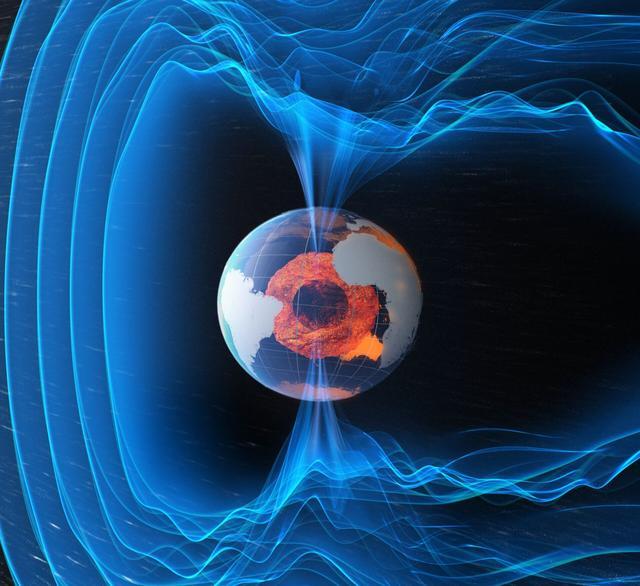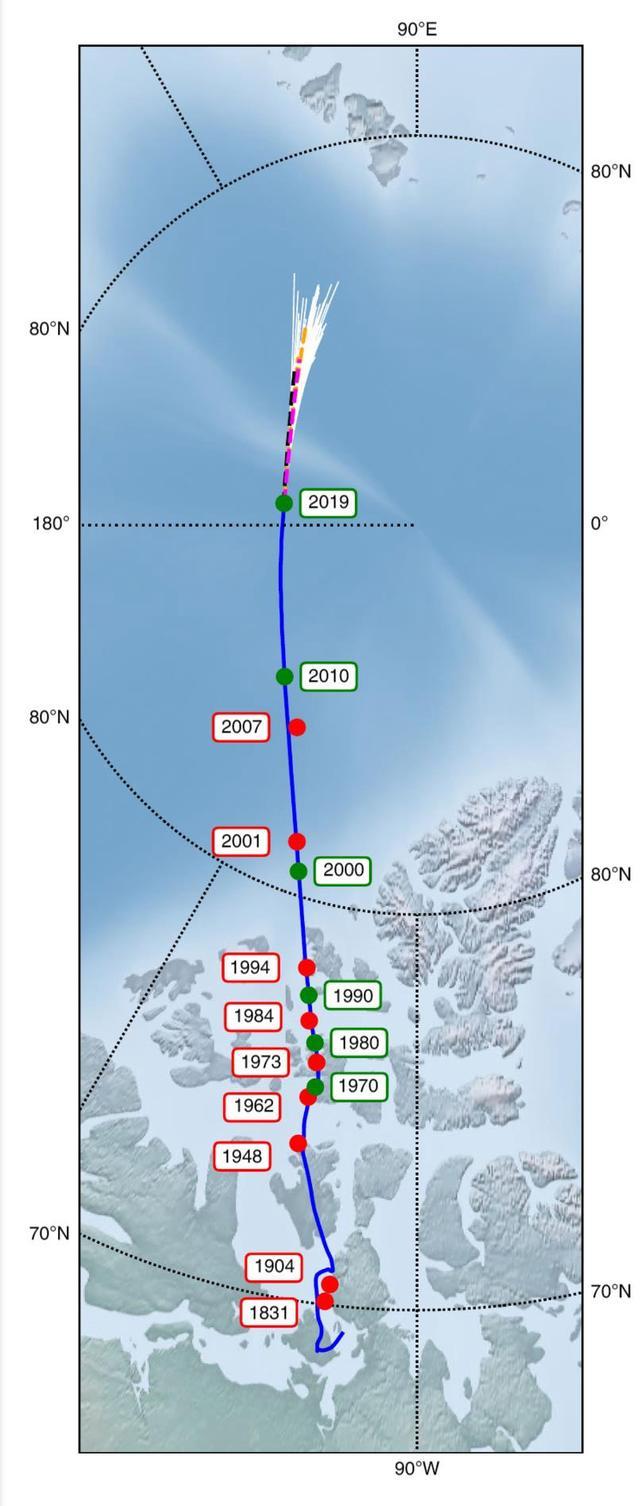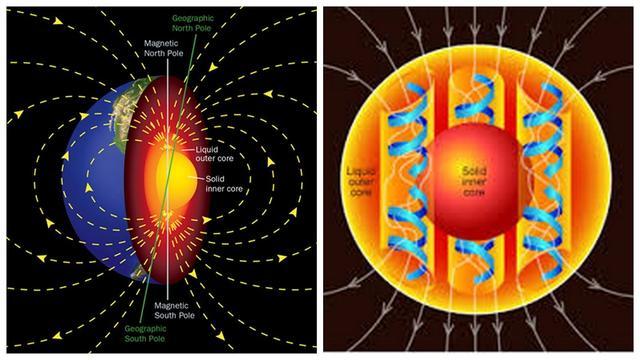Major changes are taking place inside the Earth that make the pole from the north move gradually towards Siberia
- Tram Ho

Our Earth is a planet with a huge magnetic field. For billions of years, it has protected the life of the Earth from the onslaught of high-energy cosmic rays, protecting our precious atmosphere from solar winds and protecting Earth’s life as well. as human civilization.
Having a magnetic field will inevitably lead to extremes; in 1831, scientists confirmed for the first time that the Earth’s north magnetic pole was located in the Nunavut region – the newest, largest, and farthest territory north of Canada.
Shortly thereafter, however, scientists discovered that the Earth’s north pole seemed unstable and refused to be fixed in one position and had an average travel speed of about 15km per year.

However, in the 1990s, the rate of magnetic pole drifting increased dramatically. From 1990 to 2005, the speed traveled 60 km a year, so to speak. In October 2017, the north pole crossed the international day shift line and moved from the western hemisphere to the southern hemisphere and then drifted southward.
The speed of this magnetic pole travel is so fast that GPD has changed its navigation and forced scientists to create a new geospatial model from the world to provide everything from flight guidance to the system. Global positioning system (GPS) on smartphones.
So why does the geomagnetic pole change so much?

The international date line, or the line that changes the international date, is an imaginary line used to make the boundary between the time zone UTC + 14 and UTC-12, going nearly 180 degrees east longitude from the North Pole, across the waist. the Bering Sea, the Pacific Ocean, up to Antarctica, was regulated by the International Conference on Meridian Meeting in Washington in 1884.
A new study from Leeds University in the UK suggests that this could be caused by major changes within the Earth. When the Earth’s core radiates heat to the outside, it causes convection of molten iron in the liquid outer core, and the magnetic field generated by the swirling currents of liquid iron in the outer part of the Earth’s core. Therefore, changes in this flow may change the position of the north pole. However, at the intersection of the core and mantle of the Earth, these two vortices always have a “struggle” with each other.
This means that if there is an uneven density in the loose outer core, it can cause changes in the magnetic pole.
Through seismic wave scanning, the scientists determined that the magnetic field was not encapsulated in the core, but rather that the magnetic field flowed outside the Earth’s crust. And it is the two magnetic lines underneath Canada and Siberia that are the places where the magnetic currents in the core come out.
From 1999 to 2019, the line from below Canada in Canada continues to stretch and grow in an east-to-west direction and divides into two smaller magnetic lines that are connected to each other, this may be due to the formation of changes of the Earth’s core between 1970 and 1999.

Professor Livermore said the team predicts that the magnetic north pole will continue to move towards Siberia, but predicting the future is also difficult and cannot be confirmed.
The division of this magnetic field below Canada causes the magnetic field of the magnetic field to be weakened, and the stronger magnetic field tends to be pulled closer to Siberia, and this also causes the lateral magnetic field under Siberia is becoming stronger and tugging the poles from north to its side.
However, scientists believe that these two large magnetic fields are inherently in equilibrium, but with only a few small changes, the position of the north magnetic pole can be altered and difficult to reproduce. It is possible to predict how the north magnetic pole will move next.
For the past 7,000 years, the north pole has moved around the North Pole in a chaotic manner without following any rules. It moved to Siberia 1300 BC and drifted further below Canada in the past 400 years.

This shift of the magnetic pole shows that two or sometimes three lines of magnetism deep in the ground have affected the position of the pole over time. These currents have caused the north magnetic pole to move throughout Northern Canada during the past 400 years. But for the past 7,000 years, the north magnetic pole seems to be just moving around the geographic north pole. According to the computer model, the magnetic north pole also moved towards Siberia in 1,300 BC.
But you can be completely assured that this change in the position of this magnetic pole will not have any effect on life on Earth. Even if it goes further, there’s no need to panic as this has happened so many times before, only the inside of the Earth will always change.
Source : Genk
